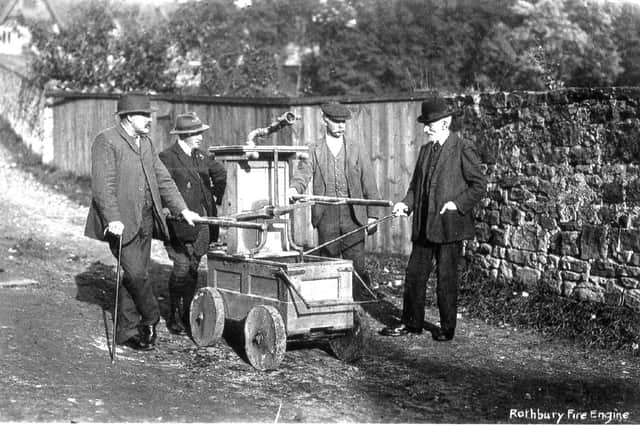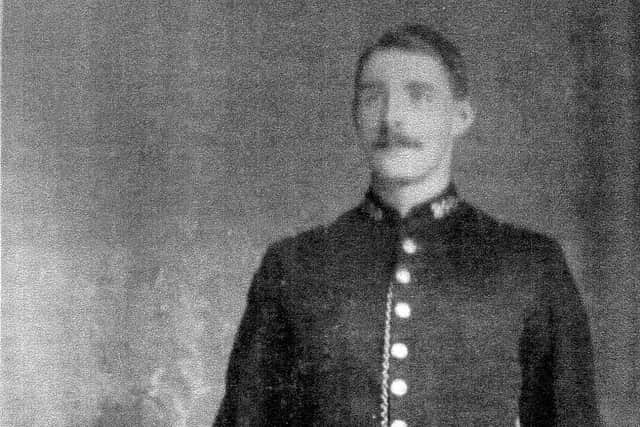If trees could talk, the tales this one could tell


These species all provide important habitats to a great variety of wildlife. As well as the ‘Mother of the Woods’, the beech is known as the ‘Queen of the Trees’ – her king being, of course, the mighty oak.
Throughout history, humans have respected and made use of beech trees. The wood burns well, and beechnuts and leaves are edible.
Advertisement
Hide AdAdvertisement
Hide AdThe bark of the beech is easy to write on, and you will have often seen lovers’ hearts and names carved into their trunks. It is probable that the word ‘book’ comes from the Germanic word for beech.


Among our stand of trees, there is a particularly noteworthy beech tree which is proudly reaching its three smooth, grey, limbs skywards, carefully avoiding a neighbouring lime.
Thankfully, no one has chosen to graffiti this tree, which grows near to Gregory’s Handyman Store and across the road from an untidy, and unassuming, small triangle of land.
This beech tree has two very interesting stories to tell. Beneath the ground on the triangle there is a well, which was greatly appreciated in days gone by.
Advertisement
Hide AdAdvertisement
Hide AdIn the past, disastrous fires had occurred in Rothbury all too often. This was when the houses were covered with thatch.
When our tree was not yet a seed (or beechnut) on its mother tree, several serious fires had raged through buildings.
In 1781, another terrible fire destroyed 16 houses. Fire, so necessary for human warmth and work, could also be a deadly enemy, taking a great deal of effort to subdue.
It was no doubt with great relief and thanks that, in 1788, Rothbury residents took possession of a fire engine. Originally kept in the church porch, the engine was moved to the triangle, just across the road from our tree.
Advertisement
Hide AdAdvertisement
Hide AdIn 1920, our beautiful beech, with its attractive silver-grey trunk, would be proud to watch as an iconic photograph was taken of the engine, surrounded by eminent Rothbury folk: Dippie Dixon, Mr Davidson, George Henderson, and Andrew Lawson.
There is a 1913 film of the engine being used which shows some of these folk, plus two police officers, one of which is PC Francis Douglas Sinton. Part of his role was to work the fire engine whenever needed.
Which brings us to the second story.
Just across from the triangle is Gregory’s Workshop.
This building used to be Rothbury Brewery, which opened back in 1749.
Interesting to note, for this story, is that wood from beech trees is used during the fermentation process of Budweiser beer; and beech logs are burned to dry the malt in German smoked beers. (Of course, neither of these beers would have been brewed, or sold, in Rothbury in 1920).
Advertisement
Hide AdAdvertisement
Hide AdRothbury brewery has a fascinating history which you can learn about in Jon Tait’s latest book, Midden Ratcher. Here we read that when the brewery was bought out of local ownership, in 1911, Mr William Farndale was employed by the Scottish Brewery as the new manager.
Seven years after being filmed operating the fire engine, and in the same year as the iconic photograph was taken, PC Sinton was again in the media spotlight.
The Evening Telegraph reported ‘A murderous attack on a local constable, following an attempted burglary.’
If trees can experience emotion, our young beech tree might well have felt some alarm at 9pm Saturday, February 28, 1920. Two Soviet sailors (called Peter Klighe and Karl Strautin) broke into the brewery. PC Sinton heard a noise; sent for Mr Farndale, then went to investigate further.
Advertisement
Hide AdAdvertisement
Hide Ad“He saw the dark figure of Klighe, who shouted something in a foreign language, then ran inside. PC Sinton gave chase, Klighe pulled a pistol from his pocket and told Sinton that if he came forward, he would shoot him.
PC Sinton drew his truncheon and charged; when he grabbed the man’s shoulder he fired, the bullet grazing his head. Strautin then came up behind the officer and hit him twice on the back of the head with a crowbar.” (Jon Tait, Midden Ratcher).
Mr Farndale then arrived, he described the following events: “As I entered, a man came running out, and I immediately tackled him, I heard a shot behind me.
The man I was fighting with escaped, leaving his white muffler in my possession, inside the shed I found Constable Sinton.
Advertisement
Hide AdAdvertisement
Hide AdHe was unconscious from a severe wound on the head.” (comments taken from The Evening Telegraph).
After a huge search, the Russians were found and sentenced to ten years’ penal servitude, and three years for burglaries. They were then to be deported.
PC Sinton recovered and served with the police until he was 65. In 1921 he was awarded the King’s Police Medal for his brave actions. He died in 1971.
Now, a 100 years after these events, as the beech tree’s leaves turn a beautiful shade of gold and her beechmast covers the triangle, some of us are clearing the space to make it a feature, as it deserves to be.
So next time you are in Rothbury, do come and see, and make sure you look up at the proud beech, and its friends, happily climbing up the bank, honoured to be part of Rothbury history.